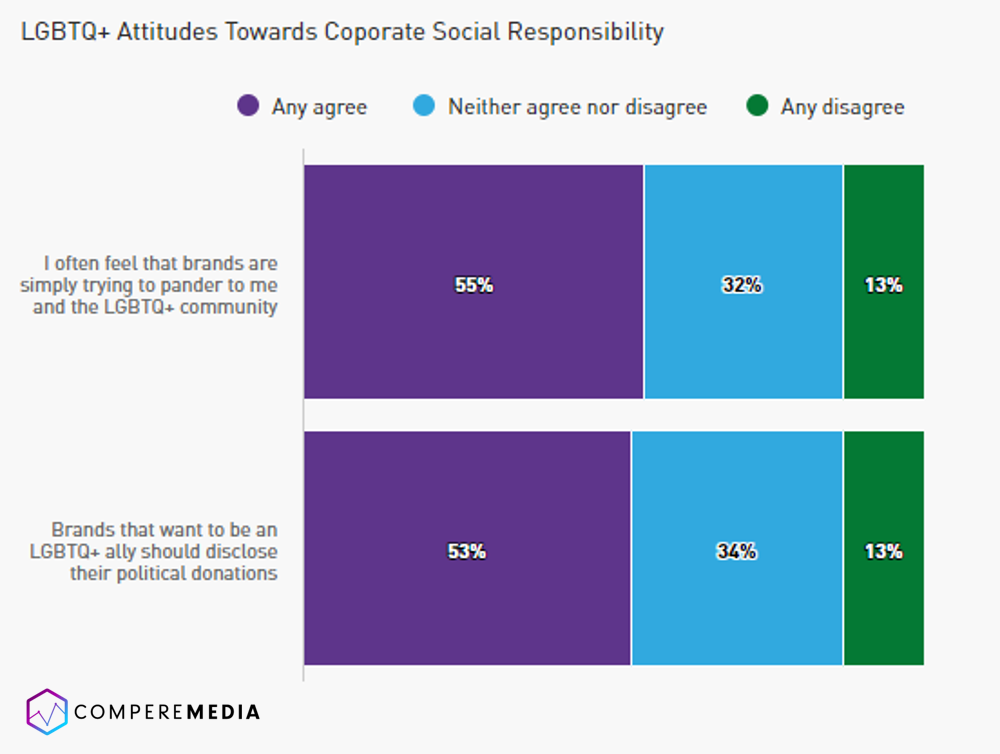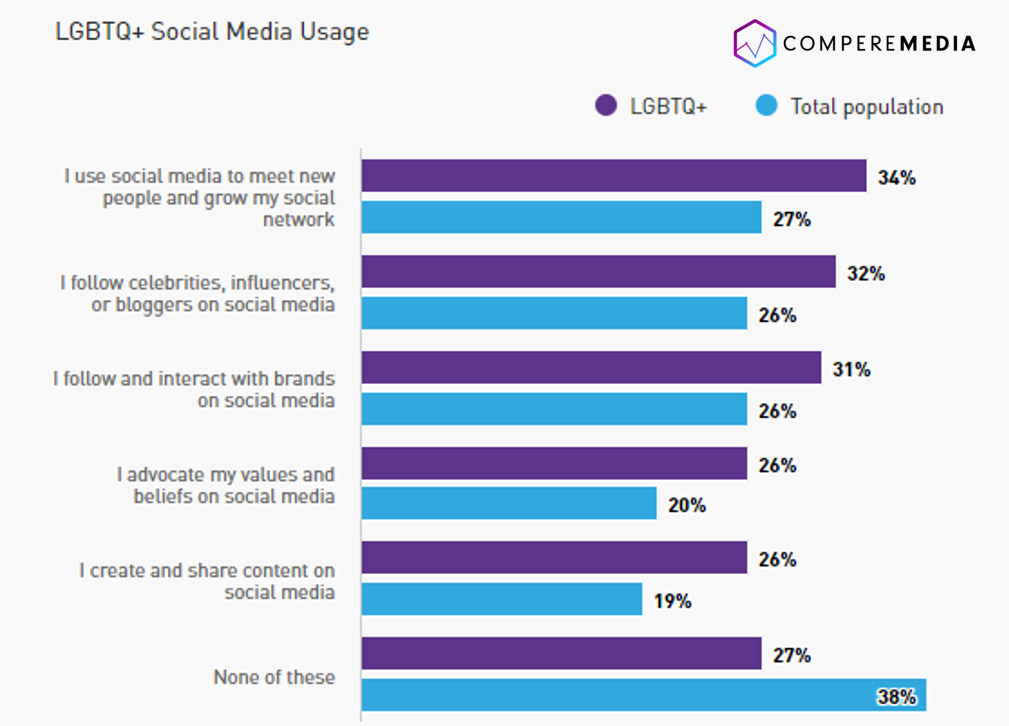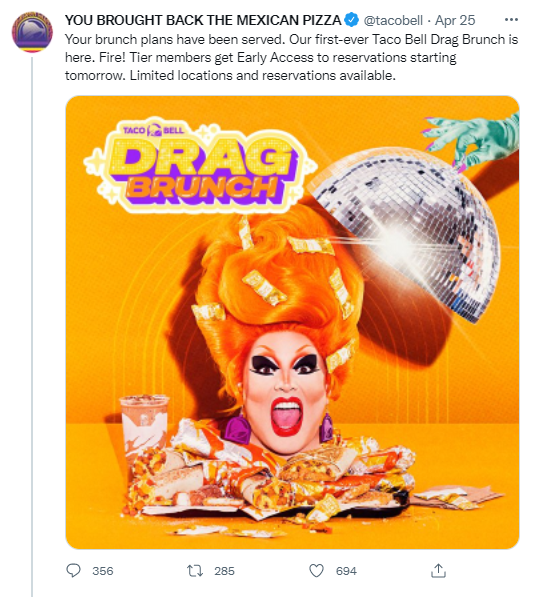3 key components for brands’ Pride 2022 strategy
As LGBTQ+ consumers have become increasingly vigilant of hollow advocacy, brands must demonstrate commitment beyond rhetoric to connect during—and after—Pride. To avoid landing in hot water, brands should consider layering their LGBTQ+ advocacy with tangible impact.
1. Emphasizing the Internal Commitment
Brands need to speak with impact during Pride campaigns, as a majority of LGBTQ+ consumers do not find meaning in the awareness holiday alone.
As brands and corporations have taken Pride by storm and the over-commercialization of the awareness holiday has come under fire, Mintel research on LGBTQ+ consumers reveals that the majority do not find Pride to be personally meaningful; in fact, this lapsed sentiment carries across multiple LGBTQ+ holidays (eg Day of Silence, Pulse Night of Remembrance, International Pronouns Day).
In commercializing Pride celebrations over time, brands have muddied the waters, and simply slapping on a rainbow logo for a month isn’t enough. For brands to drive actionable change and awareness for the LGBTQ+ community, they need to ensure that internal practices, both for employees and within their products and services, are up to equitable standards before expressing public support and advocacy.
It is easy for a brand to simply say that they support their LGBTQ+ employees, but this kind of proclamation tends to come across as shallow and opportunistic when it only comes once a year.
What we recommend
Rather than tie Pride to profit, brands should emphasize internal commitments and practices that uplift the LGBTQ+ community.
Netflix‘s actions speak louder than its words, as it consistently releases programming written by and for the LGBTQ+ community. By integrating LGBTQ+ storylines, Netflix wears its pride on its sleeve every month of the year.

Companies can emulate this sort of advocacy by donating to a cause of their LGBTQ+ employees’ choice, normalizing asking for pronouns, and offering inclusive benefits—shining light here can make Pride efforts ring truer all year long.
2. “Walking the Walk”
LGBTQ+ Americans want brands that claim to support them to “walk the walk”—not just blindly “talk the talk.”
Over half of LGBTQ+ Americans feel that most brands are simply trying to pander to them, and the same majority also believe that brands who claim to support them should disclose their political donations. Plainly put, no rainbow logo is bright enough to hide the stain of contributions to anti-LGBTQ+ causes.

Brands must remember the origin of Pride and its symbolic importance to the LGBTQ+ community. Not only is it patronizing and subject to consumer criticism, but expressing solidarity in June is meaningless if company dollars support those hindering the acceptance of LGBTQ+ people in society.
What we recommend
Brands that are in a position to do so, should speak out against anti-LGBTQ+ legislation.
Anti-LGBTQ+ legislation is on the rise, and brands have an opportunity to speak up and drive change against discrimination. Brands who want their Pride marketing to go the extra mile can couple uplifting messaging with public statements of opposition to laws that would directly interfere with what the advertisement celebrates.
This is not to suggest that Pride ads should become political ads, but standing in explicit solidarity against dialing back the clock is a surefire way for a brand to show that its advocacy is more than just talk. It is also an opportunity for brands who may still be working towards adopting their internal culture to listen to the needs of their LGTBQ+ communities actively.
3. Fostering a Sense of Community
Social media has given the LGBTQ+ community the ability to connect when it would otherwise be unsafe or geographically impossible. Connecting online allows LGBTQ+ people to meet others who understand, relate to, and have experienced similar life events, which fosters a sense of belonging and community. As a result, LGBTQ+ Americans tend to be more active on social media and aren’t moved by brands encroaching on their safe space.
Beyond community building, LGBTQ+ Americans are also shown to be more likely to advocate values and beliefs on social media, likely because they feel that sitting out of the conversation is a luxury they cannot afford. Brands must first seek to understand how social media is being activated before blindly joining the conversation.

What we recommend:
Brands should consider taking the conversation offline and provide opportunities for LGBTQ+ people to connect.
Brands can be more thoughtful with their financial support by inventing unique ways to foster a community for LGBTQ+ people, offline. While donating money is still powerful, brands could also produce LGBTQ+ tailored events in a manner that connects back to the brand’s fabric.
Whether it’s a talk on financial planning in the gig economy co-hosted by a drag queen or sponsoring local Pride events, brands should get creative in bringing the community together.

What we think
If brands want impactful Pride marketing, they must demonstrate commitment to strong, impactful LGBTQ+ advocacy.
Consumers want authentic LGBTQ+ allyship. Celebrating the month of Pride itself is less important to LGBTQ+ consumers than seeing organizations implement inclusive policies, commit to investment in the community year-round, and share where their donations go. They want to see brands put actions first and rainbows second. To meet this moment with the advocacy it deserves, brands must prioritize meaningful investment in the LGBTQ+ community over the urge to prioritize “cute” aesthetics.





